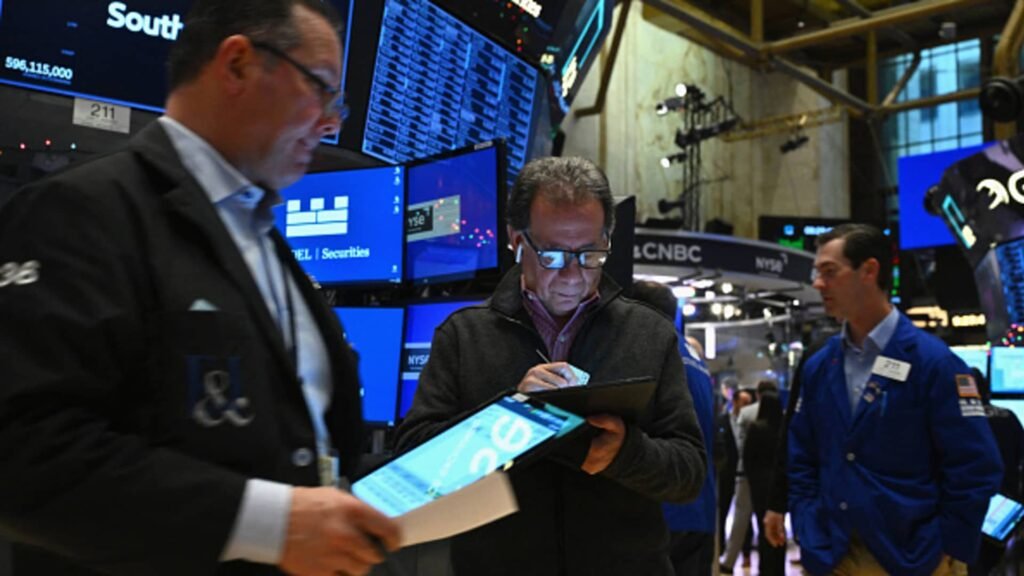Traders work on the floor of the New York Stock Exchange (NYSE) during morning trading on December 14, 2023, in New York.
Angela Weiss | Afp | Getty Images
This report is from today’s CNBC Daily Open, our new global markets newsletter. CNBC Daily Open informs investors about everything they need to know, wherever they are. Like what you see? You can subscribe here.
What you need to know today
The markets are working
US stocks continue their rally, with the Dow hitting a new high on Thursday. They were boosted by drop in US Treasury yieldswith the 10-year yield falling below 4% for the first time since August. Asia-Pacific markets rose Friday. Hong Kong’s Hang Seng index jumped 2.5%, leading the region’s gains, while Australia’s S&P/ASX 200 index extended its six-day winning streak, gaining about 0.9 %.
An unequal Chinese economy
Chinese industrial production in November increased by 6.6% year-on-year. This figure not only exceeds expectations for a 5.6% increase, but it is also the fastest expansion in almost two years. But the country’s economy remains uneven: Retail sales grew a less-than-expected 10.1% from the previous year. China’s property prices have also fallen 0.3% month over month, their fifth consecutive month of decline.
Major central banks take a break
THE The European Central Bank keeps interest rates unchanged at 4%, a record for the euro zone. The central bank also revised downwards its economic growth projections for the region for 2023 and 2024. Likewise, the The Bank of England kept its main interest rate unchanged at 5.25%, as well as the Swiss National Bank at 1.75%. But Norway’s Norges Bank unexpectedly increased its rates by 25 basis points, to 4.5%.
Intel competes with Nvidia
Intel announced Gaudi3, an artificial intelligence chip intended to run generative AI software. Gaudi3 launches next year and will compete with Nvidia’s H100 – which runs OpenAI’s ChatGPT – and AMD’s upcoming MI300X. At Intel’s launch event, the chipmaker also announced new Core Ultra chips for Windows laptops and PCs, as well as Xeon chips for servers.
(PRO) New to Goldman’s List
Goldman Sachs maintains a “conviction list,” a catalog of the bank’s “curated and active” selections of global stocks that it believes are worth buying. Here is four notable additions to the lista technology company with over 100% upside potential, according to Goldman.
The essential
American markets extended their rally, stimulated by an accommodative Fed.
THE Dow Jones Industrial Average added 0.43%, setting another record after crossing the 37,000 level for the first time on Wednesday. THE S&P500 gained 0.26% and the Nasdaq Composite increased by 0.19%.
The pace of the rally slowed Thursday as big technology companies, which have a disproportionate impact on indexes, posted losses. Microsoft fell 2.25%, Amazon lost 0.95% and Meta fell 0.47%.
German Bank Bankim Chadha, chief U.S. and global equity strategist, thinks market growth next year could be more pronounced outside of big tech. “We hope the recovery will expand so I would look elsewhere for now,” Chadha said.
Big Tech’s losses on Thursday, however, were more than offset by gains in other sectors.
Bank stocks – which tend to benefit from looser monetary policy as more cash flows through the system – had a good day. Western Alliance Bank climbed 9.35%, Charles Schwab jumped 7% and Citizens Financial Group jumped 6.63%, helping the SPDR S&P Regional Bank ETF gains 4.83%.
And they could continue to do better than the broader U.S. stock market in 2024, according to analysts at RBC Capital.
“Over the second half of 2024, we see continued improvement in fundamentals as the Federal Reserve gradually lowers the federal funds rate, loan growth begins to accelerate, loan loss provisions begin to decline and that the return on capital through share repurchases begins to accelerate,” RBC said.
So the recovery could actually broaden next year as more sectors benefit from the Fed’s gradual interest rate cuts.
Moreover, based on much better-than-expected retail sales in November, consumer spending – which accounts for nearly 70% of US gross domestic product – will remain stable or even increase, bolstering hopes for a soft landing.


